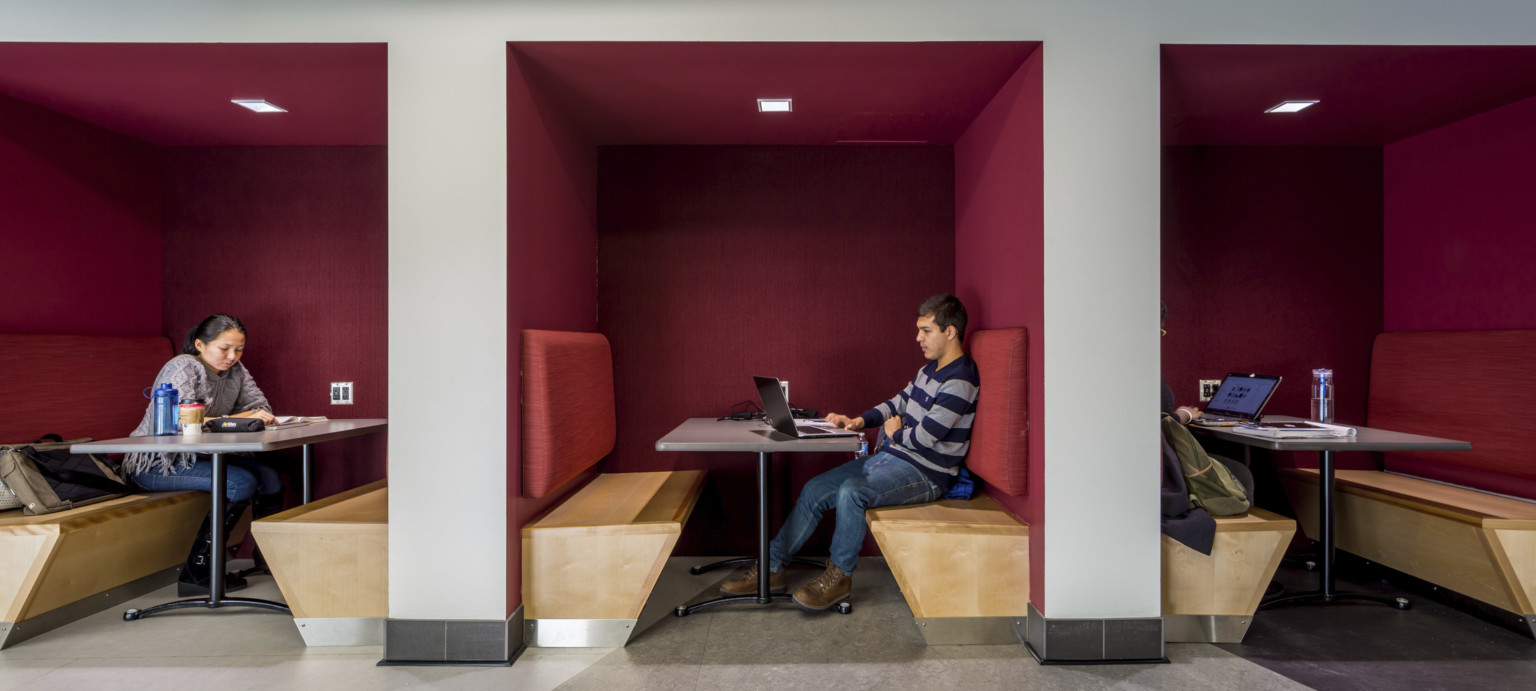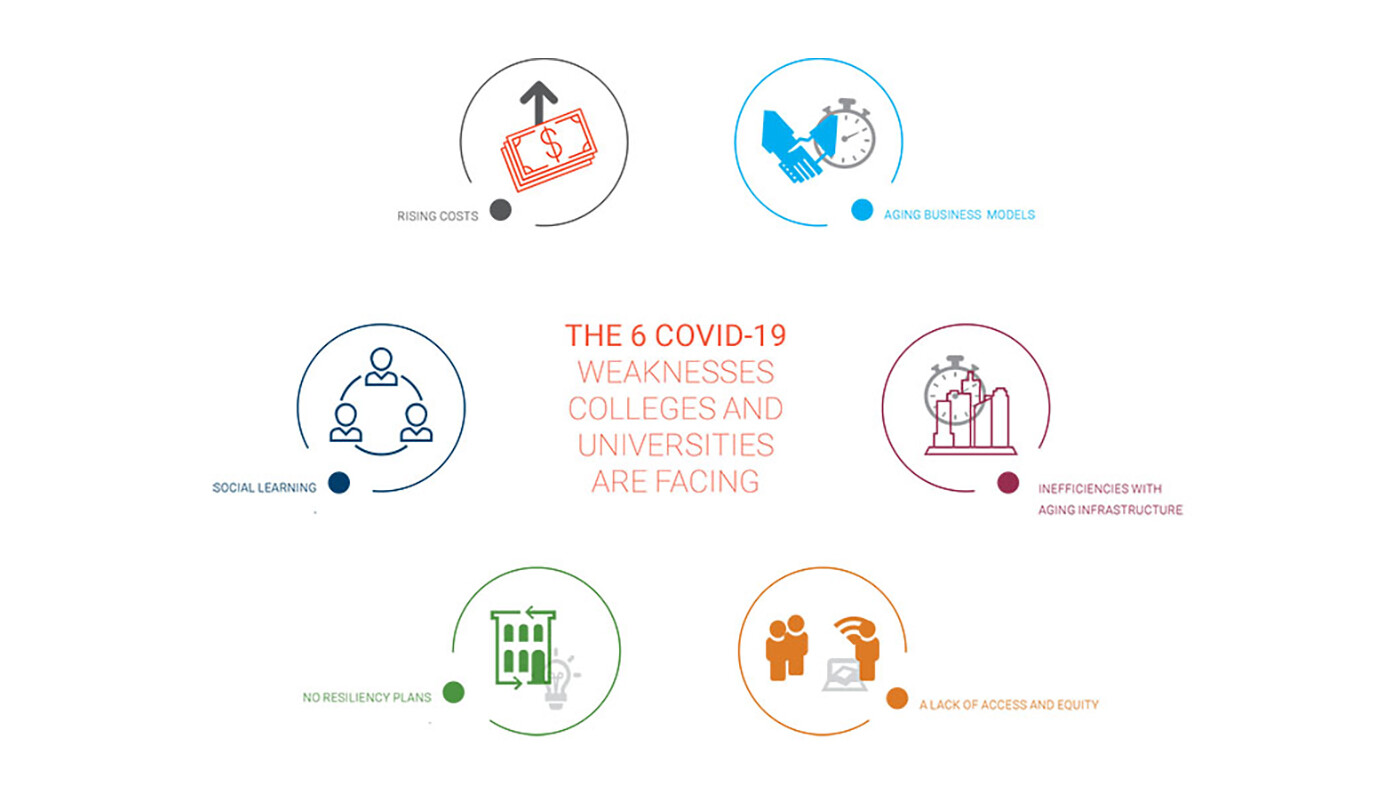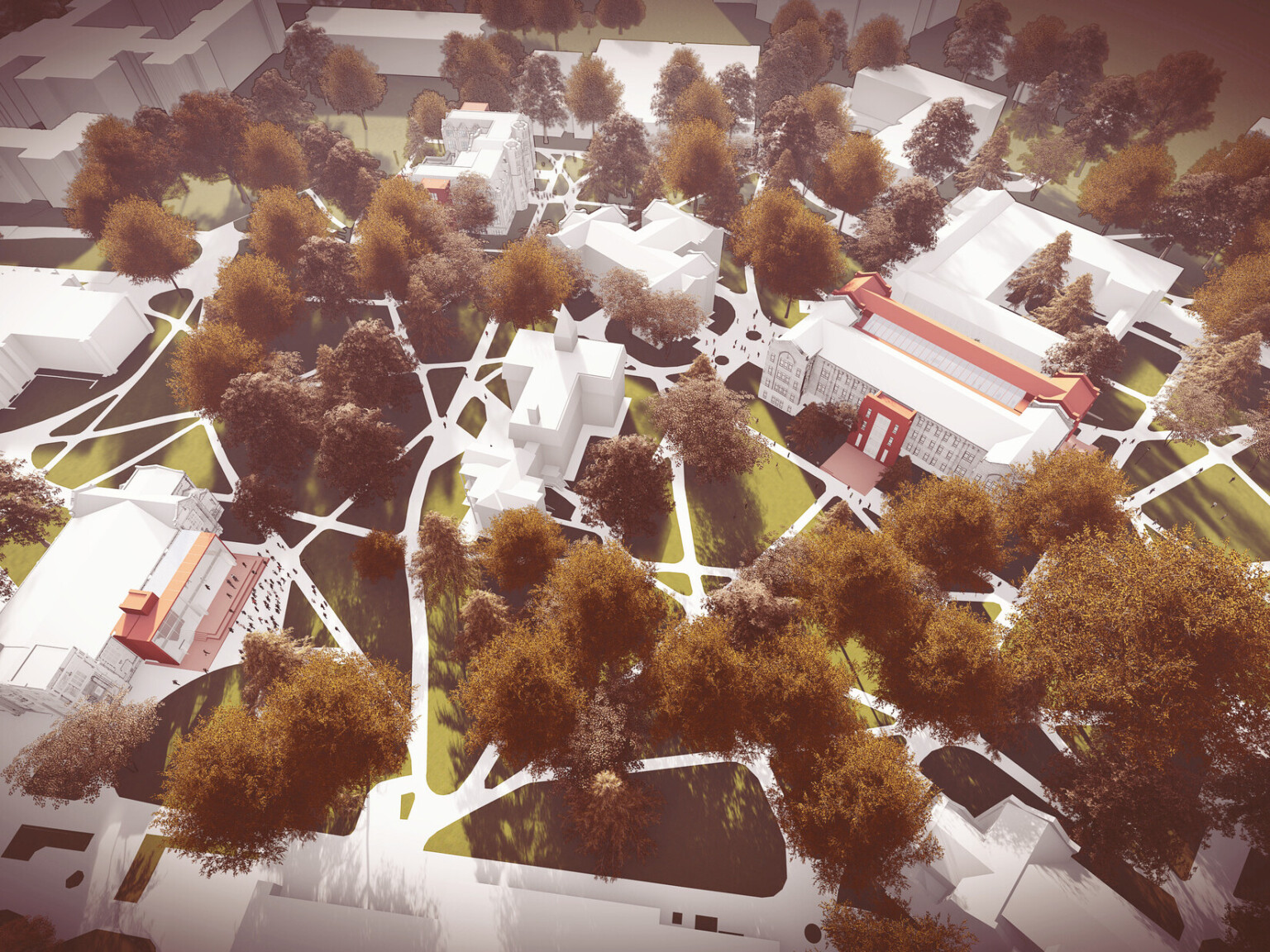
Pulling Back the Curtain on Higher Education Vulnerabilities
As a design firm, we serve higher education clients on campuses nation-wide. To determine how to best assist them, our design and planning experts connected with administrators, faculty, and students at 85 institutions as soon as they began closing their doors and transitioning to online-only instruction. From our team’s personal conversations, we gained a deep understanding of the immediate and long-term impacts of the pandemic on higher education, and that a call for change was imminent. Many institutions we spoke to reiterated that the system is broken, and to do nothing would further diminish their industry as a whole.
COVID-19 brought attention to some of the weaknesses our colleges and universities are facing nationwide, such as:
- Rising costs including the increase in tuition and student housing fees; an increase in student loan debt burden; and overall operational expenses.
- Aging business models that lack access to online academic counseling and other student services, and reliance on funding based on students in seats and full-time employees rather than actual head count.
- Inefficiencies with aging infrastructure that is more costly to operate, maintain, and modernize, and operations where classes are scheduled at specific times Monday through Thursday.
- A lack of access and equity where some students and faculty do not have personal access to technology, Wi-Fi, and laptops off campus, resulting in the most at-risk students falling behind.
- No resiliency plans for a global crisis lasting months or longer. Most institutions have plans in place for natural disasters that last days to weeks. However the pandemic revealed a lack of longer term resiliency planning.
- Social learning opportunities on campus and experiences outside the classroom where students interact and socialize before, after, and between classes.

Enhancing an Institution’s Brand Value
A majority of an institution’s financial models are tied directly to on-campus participation, and brands lean heavily on the physical campus experience. The disruptor of the pandemic and its aftermath of digitizing the learning environment is the great equalizer among colleges and universities. Institutions are recognizing the need to redefine and defend their brands and their value to students.
The brand of many premier private institutions is based on the campus experience, student amenities, and low faculty-to-student ratios. Students at these institutions are weighing the value of paying higher tuition costs for remote instruction without an on-campus experience, especially if campuses are forced to close their doors once again. Alternatives for students – at least for the short-term – are transferring closer to their hometown to attend a community college or state school, transferring to institutions that delivered robust online programs even prior to the pandemic, or opting for a gap year to monitor the situation.
On the flip side, institutions are encouraging students to enroll with branded campaigns focusing on the benefits of attending college right now. The overriding message is that with an unknown economy and limited jobs available, now is the best time to earn a degree and prepare for a job market in the future as the economy recovers.
Like many other industries impacted by the pandemic, higher education will never be the same. The harsh reality is that not all institutions will be able to overcome the pandemic, however, I’m confident that those institutions that focus on resiliency and adaptability will flourish. The challenge I see for everyone involved in the higher education industry is to continue the momentum of positive change to future proof and protect institutions for decades and generations to come.
This narrative was completed as part of The Evolution of Campus research project and co-authored by Linsey Graff.










